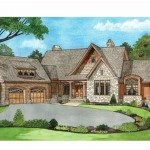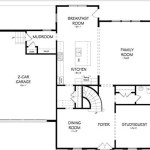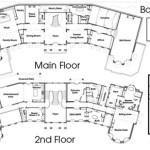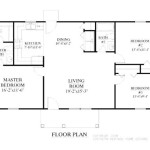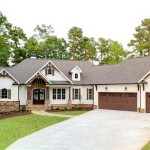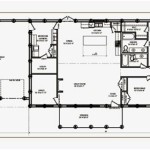Narrow Lot Two Story House Plans: Maximizing Space and Style
Urban and suburban landscapes often present the challenge of limited land availability. Narrow lots, characterized by their width being significantly smaller than their depth, require innovative architectural solutions to create comfortable and functional living spaces. Two-story house plans designed specifically for narrow lots offer an efficient way to maximize square footage on a smaller footprint. These plans prioritize vertical expansion, allowing homeowners to enjoy the benefits of a larger home without requiring expansive land.
The appeal of narrow lot two-story homes extends beyond mere practicality. They often provide unique design opportunities, enabling architects and builders to incorporate creative fenestration, efficient layouts, and strategically placed amenities. Careful consideration is given to natural light, ventilation, and spatial flow to ensure a pleasant and functional living environment. This article delves into the key aspects of narrow lot two-story house plans, exploring their considerations, advantages, and design principles.
Understanding the Challenges and Opportunities
Narrow lot construction presents specific challenges that influence design choices. Building codes frequently impose setback restrictions, dictating how close a building can be to property lines. These restrictions directly impact the available building envelope and necessitate careful planning to optimize the use of the limited space. Furthermore, accessibility for construction equipment and materials can be more difficult on a narrow lot, potentially increasing construction costs and requiring specialized strategies.
However, these challenges also present opportunities for creative design and innovation. Narrow lots often encourage the use of vertical building strategies, resulting in visually striking homes with unique architectural features. The limited width can inspire efficient floor plans that minimize wasted space and maximize functionality. Furthermore, the focus on verticality can lead to improved views and increased natural light penetration, particularly on the upper floors. The design must be thoughtfully considered to minimize any feeling of confinement and maximize the usability of all available space.
One of the primary considerations when designing for a narrow lot is the placement of utilities and services. Optimal placement of these elements, such as electrical panels, HVAC systems, and plumbing risers, is crucial to avoid obstructing valuable living space and to ensure easy access for maintenance. Integrating these systems in a compact and efficient manner is paramount.
Key Design Principles for Narrow Lot Two-Story Homes
Several key design principles guide the development of successful narrow lot two-story house plans. These principles focus on maximizing space, optimizing natural light, and creating functional and aesthetically pleasing living environments. Ignoring these principles can result in a cramped, poorly lit, and ultimately unsatisfying home.
Open floor plans are frequently employed to create a sense of spaciousness on the ground floor. Combining living, dining, and kitchen areas into a single, flowing space eliminates the need for walls, which maximizes usable area and promotes social interaction. Strategic placement of furniture and visual dividers can help delineate different zones within the open space without sacrificing the feeling of openness.
Vertical circulation, primarily through staircases, plays a crucial role in narrow lot two-story home design. Staircases should be strategically placed to minimize their footprint and maximize their utility. Options include open staircases, spiral staircases, and staircases integrated with storage solutions. Natural light should be incorporated to illuminate the stairwell and make it a more inviting space. The design should also adhere to all relevant building codes regarding stair dimensions, handrails, and safety features.
Windows and natural light are essential for creating a bright and airy atmosphere. Large windows, strategically placed skylights, and light wells can bring natural light deep into the interior of the home. Paying attention to solar orientation is crucial to maximize sunlight during the day and minimize unwanted heat gain. Proper shading devices, such as awnings or overhangs, can help control the amount of sunlight entering the home, contributing to energy efficiency and comfort.
Storage solutions are another critical consideration. Given the limited square footage, maximizing storage space is essential for maintaining organization and minimizing clutter. Built-in cabinets, shelving units, and under-stair storage can provide valuable storage without taking up valuable floor space. Utilizing vertical space for storage, such as tall cabinets or shelving that extends to the ceiling, can further enhance storage capacity.
Exterior design should complement the surrounding environment and maximize curb appeal. The facade design should be balanced and visually appealing, taking into account the architectural style of the neighborhood. Vertical elements, such as columns or window trim, can help emphasize the height of the home and create a sense of grandeur. Landscaping should be carefully considered to enhance the aesthetic appeal of the home and to provide privacy and shade.
Types of Narrow Lot Two-Story House Plans
Narrow lot two-story house plans can be broadly categorized into several types, each with its own unique characteristics and advantages. Understanding these different types can help homeowners choose the plan that best suits their needs and preferences.
Front-loaded garage plans
are characterized by a garage that is located at the front of the house, facing the street. This type of plan is often used in suburban developments where front-entry garages are common. While convenient for parking and storage, front-loaded garages can sometimes detract from the curb appeal of the home. The design of the garage door and surrounding facade should be carefully considered to minimize its visual impact.Rear-loaded garage plans
feature a garage that is located at the rear of the house, typically accessed via an alleyway or side driveway. This type of plan offers several advantages, including improved curb appeal and increased privacy in the front yard. Rear-loaded garages can also provide additional space for landscaping and outdoor living areas in the front of the home.Side-entry garage plans
have a garage that is located on the side of the house, often accessed via a driveway along one side of the property. This type of plan can be a good compromise between front-loaded and rear-loaded garages, providing convenient parking access while still maintaining a relatively attractive facade. Side-entry garages can also help to visually widen the house and create a more balanced appearance.Zero-lot-line plans
are designed to be built directly on one property line, maximizing the use of available land. These plans are often used in urban environments where land is scarce and building codes permit zero-lot-line construction. Zero-lot-line plans require careful consideration of privacy and noise control, as adjacent homes may be located very close together.Courtyard plans
incorporate a central courtyard or patio area that is enclosed by the walls of the house. This type of plan provides a private outdoor space that can be used for relaxation, entertaining, or gardening. Courtyard plans can also improve natural light and ventilation throughout the home. The design of the courtyard should be carefully considered to ensure that it is both functional and aesthetically pleasing.The selection of the most appropriate plan is dependent upon several factors, including lot configuration, local zoning ordinances, aesthetic preference, and financial constraints. Engaging with a qualified architect or experienced builder is advisable to ensure that the chosen plan is both suitable for the specific site and compliant with all applicable regulations.
In addition to these categories, there are numerous variations and hybrid plans that combine elements from different types. The key is to find a plan that effectively addresses the specific challenges and opportunities presented by the narrow lot and that meets the needs and preferences of the homeowner.
Consideration should also be given to the long-term adaptability of the plan. As family needs evolve over time, the ability to modify or expand the home can add significant value. Flexible spaces that can be adapted for different uses, such as a home office that can be converted into a bedroom, can enhance the long-term utility of the home.
Finally, selecting a plan that aligns with the overall aesthetic of the neighborhood is important. While personal preferences should be considered, choosing a design that complements the surrounding architecture can enhance the value of the home and contribute to the overall cohesion of the community.

Narrow Lot Two Y House Plan With 4 Bedrooms Cool Concepts Plans Modern Floor

Narrow Lot Two Y House Plan With 4 Bedrooms Cool Concepts Plans Architectural

2 Story House Plans For Narrow Lots Blog Builderhouseplans Com

Beautiful House Plans For Narrow Lots Pinoy Designs Two Story Design 2 Y

2 Story House Plans For Narrow Lots Blog Builderhouseplans Com

Modern Narrow House Plan View Park Beach Plans Designs

Narrow Lot Two Y House Plan With 4 Bedrooms Cool Concepts

Urban Two Story Home Floor Plans Inner City Narrow Lot Design House Layout

2 Story House Plans For Narrow Lots Blog Builderhouseplans Com

Narrow Lot House Plan With Nursery Drummond Plans

